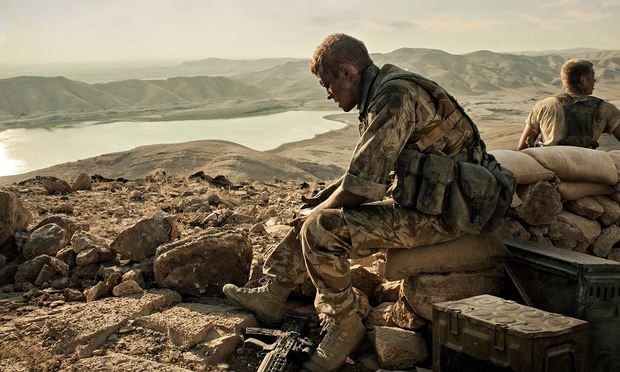With a tagline promising ‘A Modern British War Film’, and advanced screenings in support of military charities, Kajaki: The True Story seems to adopt a distinctly un-British flag-waving sensibility, in line with the recent likes of Lone Survivor and American Sniper. Appearances are deceiving however, and at least until its final reel, Kajaki purports to be less concerned with war and Britishness specifically, balancing an authentically realised depiction of masculinity and bravery with nail-biting, Hitchcockian levels of suspense.”
The lions share of Paul Katis’ partially crowd-funded, Bafta-nominated debut feature takes place in the depths of Kajaki dam, located in a small Afghanistan village where a number of British soldiers find themselves stationed in 2006. Led by an impressive, largely-unknown ensemble, naturalistic performances further complement the film’s pervasive realism. This extends to the rough northern and Scottish accents, which despite rendering some dialogue borderline incomprehensible, do speak of an admirable willingness to convey the figures as true to life as possible. After one soldier is critically injured in an explosion, the troops realise they have wandered into an unmarked minefield. The remainder of Katis’ film unfolds in close to real-time, the soldiers struggling to rescue their fallen comrade. With supplies running low and calls for assistance falling upon deaf ears, their fate appears increasingly uncertain.
The carefully measured actions of the beleaguered troop, thrown into a slowly unfolding nightmare, are undoubtedly admirable, yet Kajaki nimbly navigates the line between the respectful and the celebratory. Not until its arguably misjudged conclusion does the film overtly aim to celebrate the sacrifice of war, and for the most part, Tom Williams’ screenplay approaches its ensemble as less a group of extraordinary individuals, but as ordinary people displaying extraordinary levels of bravery and endurance. Crucially, Kajaki casts the elements, not the enemy forces, as the film’s key antagonist, distancing the film from the us-vs-them mentality of much war cinema. Katis’ focused direction instills the film’s opening scenes with an air of authenticity, early exchanges gently establishing the well-drawn ensemble with smatterings of laddisms and gallows humour. Following the first mine explosion, the camera only intermittently leaves the dam, further complementing the sense of slow-rolling claustrophobia. Hereafter, hitherto banal shots of feet, bags and rocks hitting the ground are framed with a sense of intense dread. The sweltering Afghanistan desert setting is rendered in all its terrible beauty, aerial shots of the rolling landscapes belying the film’s low-budget. Only a brief night-vision stake-out betrays these limitations, unfavourably recalling a cut scene from Command & Conquer on PS1.
Quibbles aside, Kajaki assuredly overcomes its crowdfunding origins, not least thanks to its powerful ensemble. Character arcs initially appear somewhat muddled, a fact not helped by the occasionally impenetrable accents of some of the leads. Yet come the first explosion in the dam, this is ultimately to Kajaki’s favour, the soldiers rendered all the more real as they engage with their terrifying circumstances. Standouts like Mark Stanley and David Elliot harness our investment. Diametric opposites in performance intensity, they serve to exemplify the rapport that powers Kajaki’s ensemble, the unshakable tension that pervades much of the film stemming largely from the truth inherent in their performances.
Culminating with the inevitable character reel, set to the film’s sole use of non-diegetic music, Kajaki ends on a note of emotive release. While it’s undoubtedly important to honour the memory of those who endured the traumas depicted in Katis’ film, the song’s overtly sentimental tone feels at odds with the air of realism maintained for the bulk of the film. Yet this doesn’t spoil what’s undoubtedly one of the more thrilling and grounded depictions of male camaraderie seen in some time.

